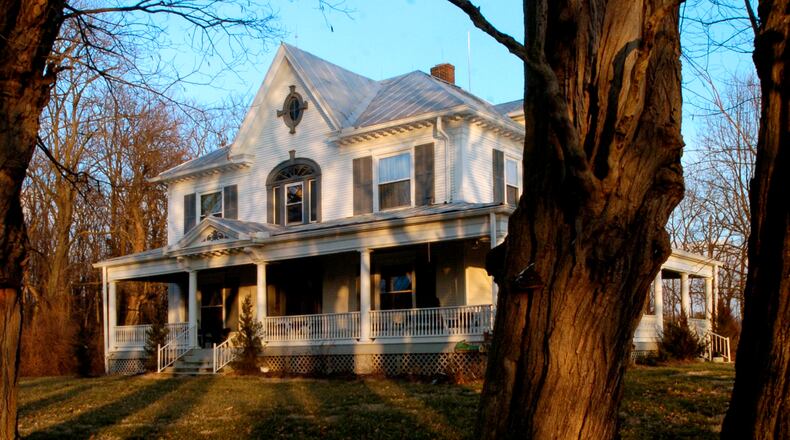MORE: These Clark County projects show efforts to attract business are paying off, officials say
Three of these farms are in Bethel Township; Wallace Farm (established in 1802) on Union Road, Wolfe Farm (1805) on West National Road, and Hardacre Farms (1811) on North Hampton Road. Stickney Farm (1805) on Neer Road is in Pleasant Twp. and Grandview Farms (1811) is at both 5890 Moorefield Road and 5050 Moorefield Road in Moorefield Twp.
To get more information about the tour call (937) 521-2005.
Sometimes, however, we forget that farmland in Clark County already existed before the land offices opened.
Centuries before us, Adena, Hopewell, and later the Shawnee had corn, bean and squash fields in the flat areas along the Mad River. Archaeologists have found hoes made of shell and stones at the village sites. In 1780, well before any settlers arrived, it was reported that the Shawnee had 800 acres of corn along the north bank of the Mad River, Lower Valley Pike and Route 4 in Bethel Twp. These acres were farmed by the women and children of the villages of Peckuwe and Kispoko.
The European Americans didn’t come here to farm this area until after the Treaty of Greenville in 1795.
MORE: Ohio BCI drones compiling detailed building photos to help schools in emergencies
Land ownership and independence was the goal of most Americans more than 200 years ago when the settlement of this area began in earnest. People wanted a place of their own where they could provide for their families and their only limitations would be how hard they wanted to work.
These folks didn’t purchase farm fields. Instead of fields they purchased sections of woods and forests.
The first Clark County farmers that we know by name were Jonathan Donnel and David Lowry who settled in Bethel Twp. in 1795. And if clearing the land wasn’t hard enough, bears were a definite problem for these settlers. Lowry killed 17 in the first year. Their neighbors Kreb and Brown got credit for being the first settlers to raise corn in 1796, according to Heartland by Burton Kummerow.
Clark County’s first “modern” farmers didn’t have those great laser surveying tools of today and GPS. No. They had to physically measure the land with a surveying compass and chain. Sometimes trees or rocks marked corners of property.
The Heritage Center of Clark County has a display on its second floor that features the Ludlow-Symmes Compass and the “chain” used in this area. All of our boundaries are originally based upon measurements made by this instrument.
MORE FROM PAM COTTREL:
» Commentary: 12 things Grandma learned on summer vacation from the grandkids
»Open Houses prepare parents for start of school, but community can also help
Except for those abandoned Shawnee fields and a few meadows, most of Clark County was wooded in 1800. A person who wanted to farm had to chop down the trees and plow up land that had never been used like that before. The dirt was rich, but full of branches, roots, and rocks. Plowing that first furrow was rough work. And it wasn’t just the men who farmed, the women pitched in clearing the land also.
In some places the settlers girdled or scraped off the bark around the base of the tree which would kill it. After all the leaves fell off, farmers would then plant crops among the dead trees until the tall stark trunks could be removed.
On other areas to make fields they chopped down the trees with axes not chainsaws. This was time consuming, but the logs could be used to make barns and cabins.
When we talk about a Bicentennial farm we are talking about a farm that was cleared by the ancestors of those who live there today. Other farms next to these may have been farmed as long but the land has been bought and sold numerous times. Bicentennial farms are unique because they are the work of one family.
I grew up on a farm and I have seen how difficult it was to pass a farm down from generation to generation. In addition to keeping the taxes paid in good years and bad, there was constant land clearing and field expansion. The trees back then were huge and so were some of the boulders. There always seemed to be challenges from weather. The pioneers had to literally fight the land in order to tame it down to farm.
To complicate matters over the centuries there were not always descendants to inherit the land. Sometimes the sons had to go away to war and didn’t come back. Sometimes the next generation moved farther west or chose a different profession.
The fact that Clark County has seven Bicentennial farms is a testament to hard work, determination, stubbornness, and heartiness of multiple generations of these families. I salute them.
About the Author
